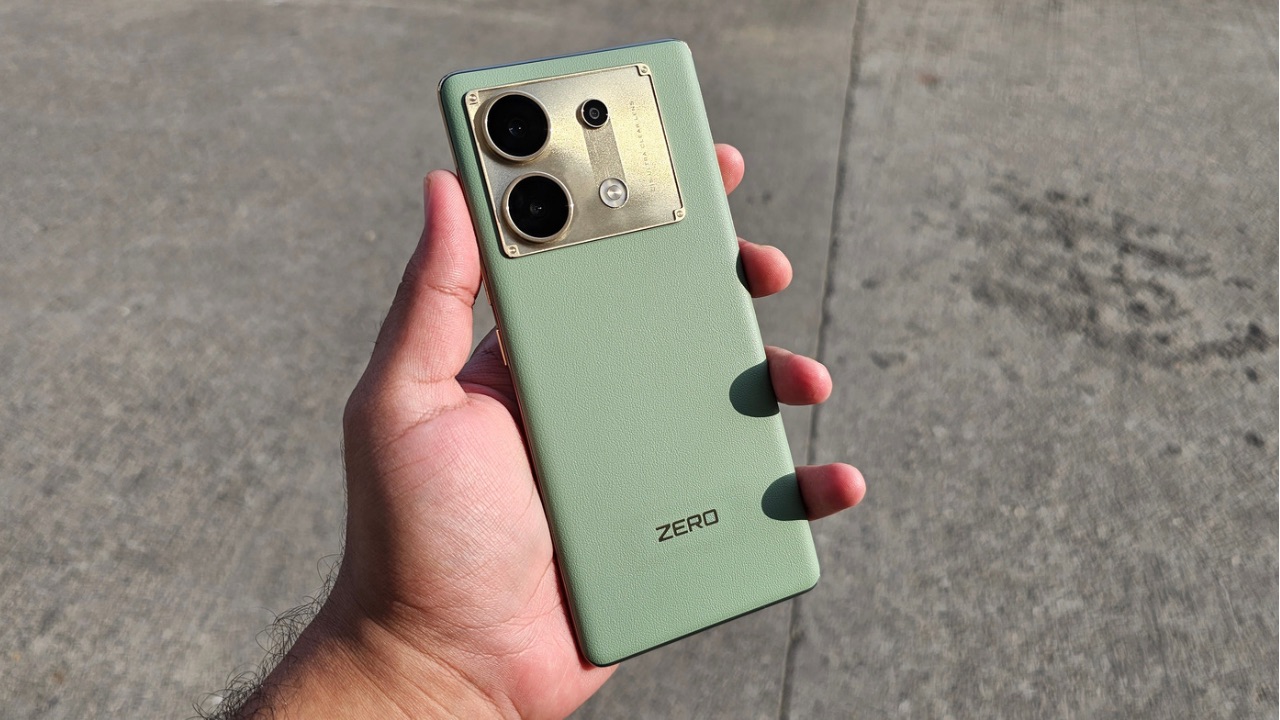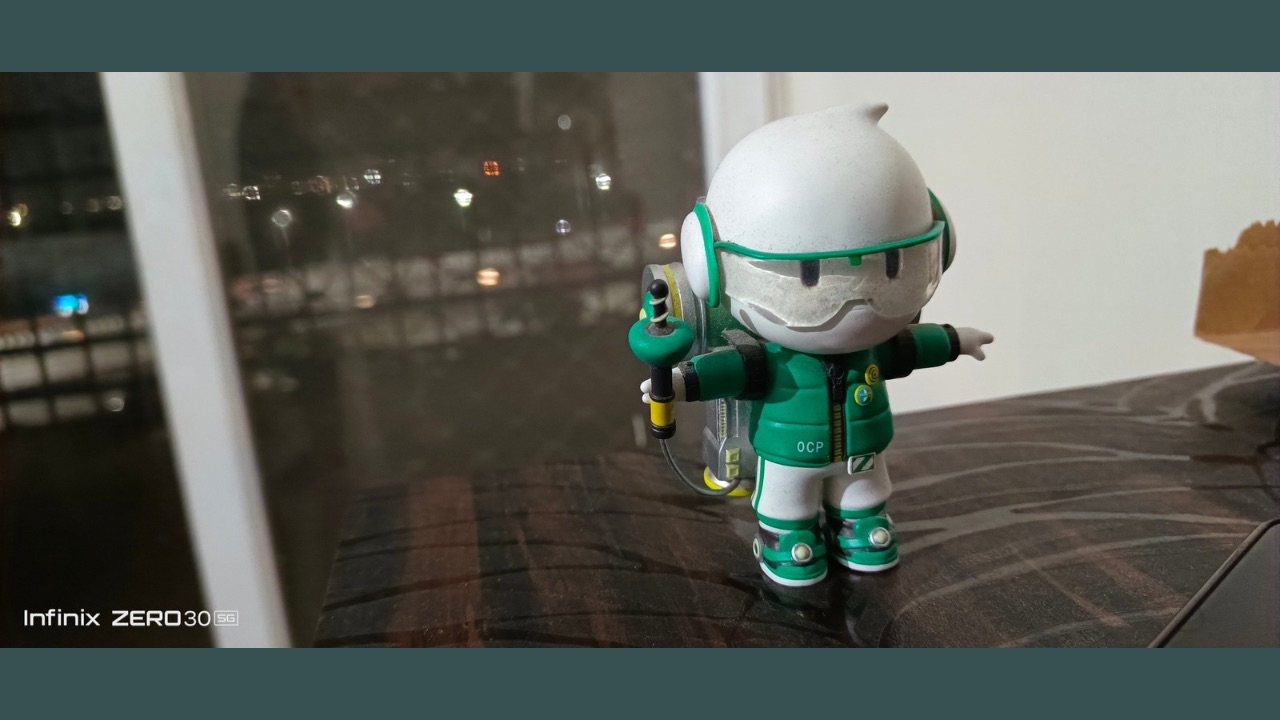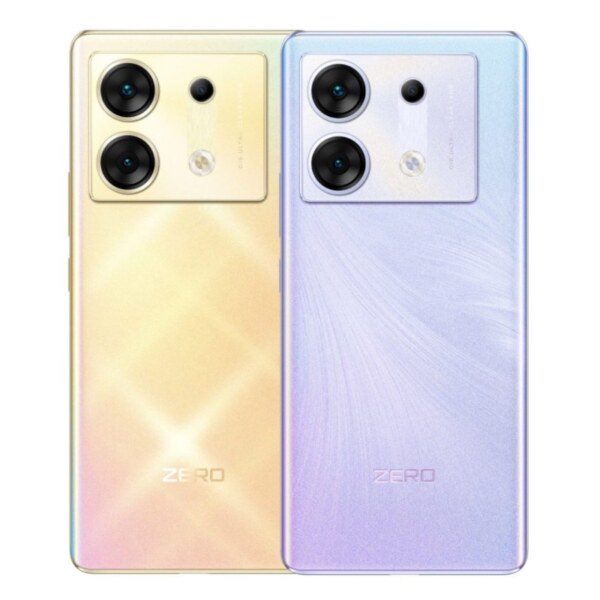Infinix is back with a bang in India, and we appreciated the efforts the brand put into its latest gaming-focused phone, the GT 10 Pro. With its latest launch, the brand went slightly upwards in terms of the price segment and has debuted the Zero 30 5G. Once again, the Infinix Zero 30 5G seems like an all-rounder, but is there more than what meets the eye? Let’s find out in our review of the Infinix Zero 30 5G.
Infinix Zero 30 5G: Design, Display

Infinix often switches up its design language. It doesn’t stick to a single design for its handsets, and with the Zero 30 5G, you can see and feel how much work has gone into making this device.
The device is available in Rome Green and Golden Hour shades, which have different back finishes. We got the former shade for review, and I have to say, this is one of the best smartphone designs I have looked at and felt in this price segment. The eco-leather finish on the back feels super premium and grippy enough.

It does feel like it will get dirty soon after you start using it, but a dampened cloth should do the trick. Because of how slim the phone is, at just 7.9mm, it places itself very well in the hand. The buttons on the right have a tactile feel to them, and despite being a plastic frame, it doesn’t feel cheap by any means.

The back houses three cameras and the camera island has been given a look as if it was screwed into the back panel. Once again, the gold camera island gives off an impressive contrasted look paired with the green finish. It’s definitely an eye-grabber design and one of the best we have seen at this price point.

Overall, it doesn’t feel that this phone starts at just Rs 24,999 in India. Out of the two shades, we would definitely recommend buying the green colour. Infinix further claims that the device is IP53-rated.
The Haptics of the phone are decent. They aren’t the best, but we have seen worse haptics in phones priced much higher, such as the Honor 90. The stereo speaker setup on the device is mostly treble-driven and has very little bass. However, it gets adequately loud to fill a room.
The Infinix Zero 30 5G sports a 6.78-inch curved AMOLED Display with a 144Hz refresh rate, an FHD+ (1080 × 2460 pixels) resolution, 360Hz touch sampling rate, 2160 Hz PWM Dimming, and 950 nits peak brightness.

These are some really impressive sets of specifications for the price, and fortunately, they translate well in real-world usage. The panel is vivid in terms of showing the colours of the content and is crisp while viewing videos or movies. The blacks are deep, and the colours are reproduced finely.

It is curved on two sides and feels premium in the hand while using. The viewing angles are excellent, and thanks to the 144Hz refresh rate, scrolling and performing other operations feel more fluid than ever. Also, even when set to ‘Smart Switch’ mode, it doesn’t handle the refresh rate aggressively and keeps it at a maximum of 144Hz for most of the time. Alternatively, you can switch between 120Hz and 60Hz.
The panel does get highly bright indoors without any issues in terms of readability. However, reading outdoors can get a little difficult when the sun’s shining bright on your head. As for the in-display optical fingerprint sensor, the performance remains optimum without any delays in unlocking.
Infinix Zero 30 5G: Software & Performance
Under the hood, the Zerp 30 5G is powered by an octa-core MediaTek Dimensity 8020 processor. It sports up to 12GB of RAM and up to 256GB of UFS 3.1 internal storage. The smartphone comes preloaded with XOS 13.1, which is based on Android 13.
The Dimensity 8020 is a rebadged Dimensity 1100, and it’s a decently capable processor. It can handle daily tasks and some amount of gaming without any issues. The 12GB RAM model we got had no problems keeping many apps running in the background. App switching and multitasking weren’t a pain for the most part.

As for the software, we have already expressed what we feel about XOS in the past, and the experience is pretty similar on the Zero 30 5G. The user interface and features remain similar to what we saw on the GT 10 Pro from the company.
Animations aren’t the best, and we could see them stutter here and there. The phone doesn’t slow down and is snappy in most cases, but the stutter and jerks throughout the system are evident when they happen.
There are some bugs in the software as well, and the device cannot promise you a stable experience. For instance, the handset didn’t want to auto-connect to my home WiFi network, and I manually had to connect it every time, even though the option was turned on.

Things further started to fall apart when the device began showing me ads in the form of recommended apps after unlocking the phone (screenshot attached above). This didn’t happen often, but you should know there are ads in the system, and I couldn’t find any way to stop those. There’s also a considerable set of apps that come preinstalled on the phone. While most of them are from Infinix, it’s good that they can be disabled too.
Additionally, connectivity performance, including Wi-Fi, 5G and Bluetooth, worked as they should. We did receive an update that claimed to fix bugs and improve system performance. Further, it bumped up the security patch to August 2023 and brought a feature called Magic Ring to mimic the functionality of Dynamic Island on iPhones.

The feature set is vast, and it would depend on you whether they are useful or a gimmick. There are a bunch of gestures, social turbo with functions like peek proof, WhatsApp call recorder and a lot more. Privacy has been handled through XHide, app lock, theft alert and similar features. The anti-theft alert feature can capture the photo of the user who may be trying to unlock your phone after two failed attempts.

Further, numerous customisation choices are available, such as a wide range of Always-on display styles, themes, live wallpapers seamlessly integrated with the AOD, various fingerprint animation styles, and additional options to explore.
As for gaming, it handles most heavy titles without issues, such as Call of Duty: Mobile. Thermals are also well handled by the handset.
Infinix Zero 30 5G: Battery backup
The smartphone packs a 5000mAh battery to feed power to that 144Hz panel and can charge at 68 watts of speed. At the highest possible refresh rate, we could get around 5 hours of screen-on time with over a day’s usage while mostly on WiFi. This period further included some gaming, browsing social media apps, 5G Mobile Data use, YouTube, and more.

From what we experienced, the device provides excellent battery backup and excels in battery management. Bringing the refresh rate down to, say, 120Hz or 60Hz, can easily get you close to 7 hours of screen-on time, which is outstanding. Charging the device with the included 68W fast charger took around 45 mins, which is on par with the competitors’ offerings.
Infinix Zero 30 5G: Cameras
The Infinix Zero 30 5G sports a triple-rear camera setup that consists of a 108MP f/1.8 primary shooter, a 13MP f/2.2 ultra-wide angle sensor and a 2MP depth lens with an LED flash. There is a 50MP f/2.5 front shooter.
The camera app is simple to use, with a bunch of modes and settings to choose from. The shutter lag is also well-contained.


Now, coming to the shots from the main sensor, the Zero 30 5G shoots good photos but not the most impressive. The dynamic range is above average, but the details are well-handled. The colours look fine and mostly follow the natural tone with a cool/blue-ish hue.


The ultra-wide angle sensor drops to below average in terms of the quality of the photos. The dynamic range, sharpness, and detailing drop drastically when compared to photos from the main sensor.

Portraits are quite detailed, with a warmer tone for the colours and slightly over-saturated. However, the sharpness, bokeh effect, and EDGE detection are on point.


Shots under artificial lighting look good, with natural colours and plenty of details. Exposure and contrast levels are kept in control under such indoor lighting. Under low lighting, the shots tend to get soft and lose out on details. Moreover, the overall tone becomes too warm.


Night shots are okay without the night mode, but with it turned on, the details, exposure and colours bump up noticeably. Lastly, selfies are well-sharpened and skin tones also look acceptable. The bokeh effect in selfie portraits also has accurate edge detection. Overall, the 50MP selfie sensor does click decent-quality photos.




Good Phone
The gold polish of the back camera has worn off, I feel bad.😭😭😭